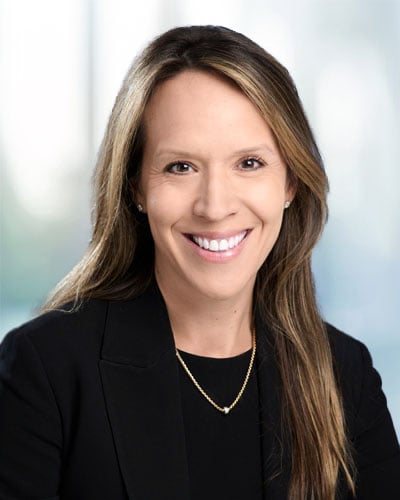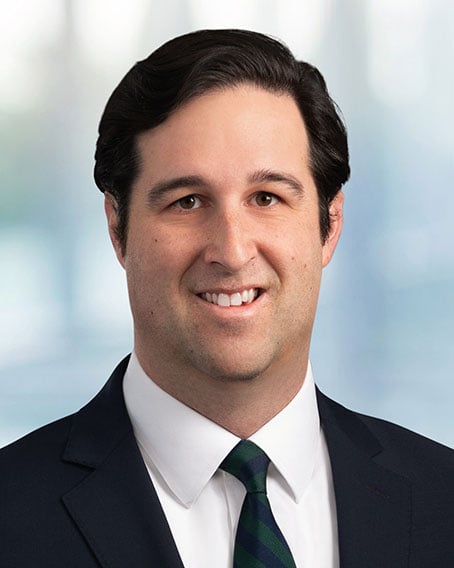On May 10, 2024, the Centers for Medicare & Medicaid Services (“CMS”) will publish the “Ensuring Access to Medicaid Services Rule” (the “Access Rule”), which implements policy changes aimed at improving access to care in the Medicaid program across fee-for-service, managed care, and home-and-community-based services (“HCBS”) programs.1 Among other changes, the finalized Access Rule (the “Final Rule”) will require that eighty percent (80%) of all Medicaid payments made to HCBS must be spent on compensation paid to direct care workers. While the so-called “HCBS Payment Adequacy Requirement” will not take effect for six years from the date of the Access Rule’s adoption (or 2030), this federal minimum payment standard—to the extent applicable to specific forms of HCBS—will require significant programmatic and operational adjustments and could impact how much HCBS program revenue providers may spend on administrative costs and overhead while still remaining profitable. However, even with this issuance of the Final Rule, many key operational and financial aspects of how the HCBS Payment Adequacy Requirement will work remain unresolved and deferred to future CMS or state Medicaid agency sub-regulatory guidance.
I. Background and History
The Access Rule is the product of the Biden Administration’s long-running policy objective to promote and expand access to high-quality, affordable health care.2 In the spring of 2022, CMS issued a Request for Information soliciting feedback on a variety of topics, including: (i) challenges related to eligibility and enrollment in Medicaid, (ii) opportunities to use data to assess and support improvement efforts related to access to Medicaid services, and (iii) opportunities to use existing and new access standards to help ensure that Medicaid payments are sufficient to recruit an adequate provider workforce.3 A common refrain among public responses was that reimbursement rates are a key driver of provider participation, and that better aligning payment approaches, including through establishing minimum thresholds for payment regulations, could ensure greater equity in beneficiary access to services across different programs.4
One issue of particular concern to CMS has been labor shortages in the direct care workforce of HCBS programs. CMS found that such shortages could lead to higher costs for state Medicaid agencies by increasing reliance on overtime and temporary staff (who tend to have higher hourly costs) and by limiting the number of beneficiaries who can transition from institutional care to a home- and community-based setting. Additionally, workforce shortages negatively impact the quality of HCBS programming and generally reduce the overall quality of care. Shortages among direct care workers were exacerbated by the COVID-19 pandemic.5 To help address these labor shortages, in May of 2023, CMS issued a Notice of Proposed Rulemaking for the Access Rule (the “Proposed Rule”),6 which, among other significant revisions to HCBS, proposed to amend 42 C.F.R. § 441.302 to add a new subsection (k) that would require that at least eighty percent (80%) of Medicaid payments to HCBS be “spent on compensation to direct care workers.”7
II. Overview of the HCBS Payment Adequacy Requirement
The Access Rule does not apply to all forms of HCBS and providers who deliver HCBS. Rather, application of the HCBS Payment Adequacy Requirement turns on three critical elements or questions that HCBS providers should ask when assessing application of the HCBS Payment Adequacy Requirement to their operations:
a. Do I Employ or Contract with “Direct Care Workers”?
The Final Rule largely adopts the broad definition of “direct care worker” set forth in the Proposed Rule, and includes the following individuals when employed by, or contracted with, a Medicaid provider, state Medicaid agency, or third party, or those delivering services under a self-directed services delivery model:
- A registered nurse, licensed practical nurse, nurse practitioner, or clinical nurse specialist who provides nursing services to Medicaid beneficiaries receiving HCBS under this subpart;
- A licensed or certified nursing assistant who provides such services under the supervision of a registered nurse, licensed practical nurse, nurse practitioner, or clinical nurse;
- A direct support professional;
- A personal care attendant;
- A home health aide; or
- Other individuals who are paid to provide services to address activities of daily living or instrumental activities of daily living, behavioral supports, employment supports, or other services to promote community integration directly to Medicaid beneficiaries receiving HCBS available under this subpart, including nurses and other staff providing clinical supervision.8
In preserving this broad definition, CMS reiterated its intent to “appropriately capture the diversity of roles and titles . . . that direct care workers may have.”9 CMS likewise declined to clarify what roles would be considered administrative functions (the compensation for which would not count towards the eighty percent (80%) threshold) though it pledged to do so in future sub-regulatory guidance.10 Notwithstanding the continued breadth, the Final Rule does, however, clarify two points:
- It expands upon the Proposed Rule to make explicit that “nurses and other staff providing clinical supervision” are considered direct care workers, an expansion of particular value to those providers for whom such supervision otherwise would constitute a large portion of their overhead.
- It expressly excludes from the HCBS Payment Adequacy Requirement individuals who provide services pursuant to a “self-directed services delivery model in which the beneficiary directing the services sets the direct care worker’s payment rate.”11
b. Do I Perform the Types of HCBS Covered by the HCBS Payment Adequacy Requirement?
The HCBS Payment Adequacy Requirement only applies to three types of HCBS: homemaker services, home health aide services, and personal care services, whether provided through licensed agencies or through self-directed models.12 While acknowledging the lack of standard definitions for these terms—which vary greatly from state to state—CMS declined to codify definitions, citing a concern of spillover impacts for other aspects of state HCBS programs. Instead, CMS intends to offer technical assistance to states as they implement the Final Rule and may revisit the issue in future rulemaking.13
CMS did, however, reiterate certain services not subject to the HCBS Payment Adequacy Requirement, including (i) “habitation or other facility-based services,” such as adult day health, psychosocial rehabilitation services, day treatment or partial hospitalization services, and clinic services for individuals with chronic mental illness,14 (ii) skilled nursing facilities or assisted living facilities,15 and (iii) HCBS services provided by the Indian Health Service and tribal health programs.16 Moreover, CMS refers in several places to the standardized “taxonomy” of home-based services, as has been published and released by CMS from time-to-time, most recently in 2019.17 This taxonomy guide helps distinguish between HCBS programs and services not covered in the description of “homemaker,” “home health aide,” and “personal care” services, and thus not included within the ambit of the HCBS Payment Adequacy Requirement, which includes many forms of HCBS authorized under state plan or waiver authorities.
c. How Will CMS Calculate the Eighty Percent (80%) Minimum Payment Threshold Mandated by the HCBS Payment Adequacy Requirement?
The commentary in the Final Rule denotes the complexity of the calculations required to assess compliance with the eighty percent (80%) minimum payment threshold mandated by the HCBS Payment Adequacy Requirement. Importantly, the commentary only begins to scratch the surface of the importance associated with the compensated-related expenditures that are factored into the numerator and the revenue-based considerations that factor into the denominator of the eighty percent (80%) threshold, including what flexibilities CMS has afforded to state Medicaid agencies in applying alternative thresholds or exempting certain providers altogether. While the Final Rule definitively adopts the eighty percent (80%) “minimum performance level” set forth in the Proposed Rule, CMS responded to public concerns by (i) excluding certain expenditures from the HCBS Payment Adequacy Requirement, and (ii) offering states additional enforcement flexibility.
As in the Proposed Rule, direct care worker “compensation”—compensation-related expenditures that will count towards the eighty percent (80%) requirement (i.e., the numerator)—is defined to include wages, benefits, and the employer share of payroll taxes.18 The Final Rule, however adds a new defined term, “excluded costs,” which are expenditures that will be excluded from the sum of total payments received by a provider for purposes of assessing compliance with the HCBS Payment Adequacy Requirement (i.e., the denominator); these include: (i) the costs of required trainings for direct care workers (including costs for qualified trainers and training materials; (ii) travel costs for direct care workers (e.g., mileage reimbursements, public transit subsidies); and (iii) personal protective equipment for direct care workers.19
The Final Rule also incorporates exemptions for small providers and providers facing extraordinary hardship, although states must opt in to create such exemptions.20 Participating states will determine how “small provider” is defined and will establish a separate, lower percent-based compensation requirement for such providers (the “Small Provider Minimum Performance Level”).21 Under the hardship exemption, states may fully exempt providers “facing extraordinary circumstances that prevent their compliance” from the HCBS Payment Adequacy Requirement.22 States are empowered to define criteria for “small providers” and hardship circumstances, and to determine a lower percent-based requirement for small providers, but states are required to “develop reasonable, objective criteria through a transparent process,” which must include public notice and comment opportunities.23 The Small Provider Minimum Performance Level must be supported by data or other reasonable factors, and only a “reasonable number of providers” may be permitted to qualify for hardship exemptions.24 CMS intends to issue further sub-regulatory guidance on the specifics of both exemptions and “encourage[s] States to consult with CMS as they develop their criteria.”25
III. Strategic Considerations and Next Steps
CMS codified the HCBS Payment Adequacy Requirement, and many other aspects of the Access Rule, without much modification from the over 2,000 public comments it received. While the ultimate impact of the Access Rule on home care providers will depend, in large part, on the degree to which the new requirements differ from existing operations, many of the critical operational and financial considerations remain unknown, either due to the need for state-specific guidance or additional CMS sub-regulatory guidance. HCBS providers should consider the following steps:
- Assess compensation currently paid to direct care workers.
- Examine the relationship between the HCBS Payment Adequacy Requirement and existing state wage laws HCBS providers operating in such jurisdictions may be subject to.
- Expand HCBS programs to include those programs not covered by the HCBS Payment Access Requirement.
Implementation is certain to pose substantial complexity, especially for providers with multi-state operations who, absent further clarity from CMS, will need to assess whether their particular workforce and HCBS programs are subject to the HCBS Payment Adequacy Requirement. To that end, it is worth reiterating that CMS has yet to clarify key elements of the requirements, including (among others) roles that would be considered “administrative” and definitions of “homemaker services, home health aide services, and personal care services.” In addition, states will need to set forth criteria for “small providers” and “hardship exemptions.” One final area to monitor is the possibility that stakeholders mount a legal challenge seeking to invalidate or narrow the HCBS Payment Adequacy Requirement. Potentially anticipating such a challenge, CMS responded at some length in the Final Rule to commenters who asserted that the agency had exceeded its statutory authority in imposing a federal compensation threshold.
- All citations to the Final Rule are to the unpublished version issued by CMS for public inspection on April 22, 2023 and available at: https://public-inspection.federalregister.gov/2024-08363.pdf. All citations to the finalized regulatory text reflect the yet-to-be published language announced in the Final Rule.
- See, e.g., Executive Order 14009, “Strengthening Medicaid and the Affordable Care Act,” (January 28, 2021), available at: https://www.federalregister.gov/documents/2021/02/02/2021-02252/strengthening-medicaid-and-the-affordable-care-act.
- Final Rule commentary at 3-4.
- Id. at 5.
- Id at 221-223.
- 88 Fed. Reg. 27960 (May 3, 2023).
- Id. at 28082.
- 42 C.F.R. § 441.302(k)(1)(ii).
- Final Rule commentary at 280.
- Id. at 275.
- 42 C.F.R. § 441.302(k)(2)(ii).
- 42 C.F.R. § 441.302 (k)(2); Final Rule commentary at 280: “[W]e also proposed to define direct care workers to include individuals . . . delivering services under a self-directed service model.”
- Final Rule commentary at 260.
- Id. at 257, 261.
- Id. at 263.
- 42 C.F.R. § 441.302 (k)(7).
- Centers for Medicare & Medicaid Services. “Trends in Rate Methodologies for High-Cost, High Volume
- Taxonomies.” https://www.medicaid.gov/sites/default/files/2019-12/trends-in-rate-august-2017.pdf.
- 42 C.F.R. § 441.302(k)(1)(i). Specifically, compensation includes “salary, wages, and other remuneration as defined by the [Fair Labor Standards Act and its regulations]” “[b]enefits (such as health and dental benefits, life and disability insurance, paid leave, retirement, and tuition reimbursement),” and “[t]he employer share of payroll taxes” for such workers.
- 42 C.F.R.§ 441.302(k)(1)(iii).
- Final Rule commentary at. 252, 254.
- Id.
- 42 C.F.R § 441.302(k)(5).
- 42 C.F.R. § 441.302(k)(4)(i)-(ii).
- Final Rule commentary at 252.
- Id. at 254.
Stay Up To Date with Ropes & Gray
Ropes & Gray attorneys provide timely analysis on legal developments, court decisions and changes in legislation and regulations.
Stay in the loop with all things Ropes & Gray, and find out more about our people, culture, initiatives and everything that’s happening.
We regularly notify our clients and contacts of significant legal developments, news, webinars and teleconferences that affect their industries.






